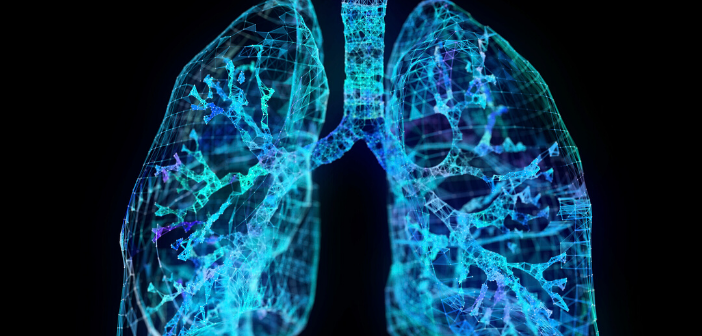
Using X-RAYS could help identify cases of coronavirus more quickly and predict outcomes for patients, computer programmers claim. An artificial intelligence programme could be used to more quickly predict the outcome of coronavirus patients by studying X-rays of their chest. Developers at the Oxford-based data-visualisation company, Zegami, have created a machine learning model that can diagnose the virus from the images.
However, the team say that in order to get better and more detailed results their AI needs to be trained on a wider range of X-ray images from infected patients.
The team believe it could have an artificial intelligence system in place within a matter of weeks to study the disease if it gets enough X-ray images.
Zegami CEO, Roger Noble, has written an open letter to the Oxford Health NHS Foundation Trust asking for more images to train the AI model.
According to the company, the new program could not only help spot and identify COVID-19 cases more easily from other lung conditions but could also help predict potential outcomes for patients.
It would be able to do this by comparing their COVID-19 lung X-rays with other previous patients in similar situations.
The team believe their invention could help provide doctors with a better idea of how the disease will progress in a patient.
This could in turn lead to the development of a more effective treatment for the virus.
Zegami launched out of Oxford University in 2016 to enable researchers and companies to explore large image datasets using machine learning models.
Noble said: ‘COVID-19 is a huge challenge, and technology should play a key role in defeating it.’
In developing its new platform, Zegami used publicly available images of COVID-19 X-rays from the GitHub data initiative.
The initiative was launched by Joseph Paul Cohen, a Postdoctoral Fellow from Mila, University of Montreal, Canada to help create AI models.
He is looking to develop the world’s largest collection of X-ray and CT images of COVID-19 infected lungs, to enable automated diagnosis faster and more accurately.
Cohen said the goal of his project was to use the X-ray images to develop AI based approaches to predict and understand the infection.
He says one day the tools developed from the dataset could be used to help GPs to triage and treat patients if radiologists get sick.
To date, because the images used by Zegami give no details on what happened to the patients, the AI can only help distinguish COVID-19 cases more easily from other lung conditions.
‘We believe the model we have developed cannot only be used to help identify cases of Coronavirus more quickly,’ said Noble.
‘With the right visuals and information loaded on to our platform and using data visualisation and AI tools, we can help identify potential outcomes for patients.’
Noble said they could do this ‘by comparing their cases with former patients who had similar conditions and learning what happened to them.
‘However, to complete our project we need more data and visuals of COVID-19 X-rays and the treatments used for these case and their eventual outcomes.’
This is why the company wrote to the NHS to ask if they wanted to work with them on the project and provide the images and necessary study data.
‘The model we develop could not only help our amazing NHS staff to make more informed decisions and potentially save lives, it could be shared around the world and play a role in helping to defeat COVID-19 on a global scale,’ said Noble.